What's the Matter With History?
A Noted Civil War Historian Takes a Critical Look at His Profession.
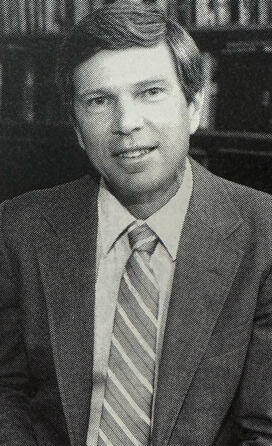
At least once every generation, professional historians have publicly lamented their inability to reach a broad general audience. For purposes of this essay I mean “professional” to be more or less synonymous with “academic.” The typical professional historian holds a graduate degree, teaches at a college or university, and is a member of the American Historical Association (AHA) or some other professional organization. Professionals hold themselves to rigorous standards of scholarship and write learned articles and books that are read mainly by other professionals or assigned to students by fellow academics. “Amateur” historians, by contrast, write articles and books that reach a larger audience but do not always adhere to the technical standards of professional scholarship. Despite much raising of eyebrows and looking down noses at such “popular” history, professionals periodically wring their hands at their own failure to reach that audience of educated laypeople who hunger for history and need to know it if they are to be informed citizens.
From the 1930s until his death in 1970, the great Civil War historian Allan Nevins was the foremost proponent of a greater effort by professional historians to reach that audience. Nevins was ideally situated to advocate this cause. He did not have a Ph.D. and he had worked in journalism for 20 years, writing history on the side, before joining the faculty of Columbia University in 1931. There the professor who did not have a Ph.D. trained a hundred Ph.D.s while continuing to write books that sold widely and earned (sometimes grudging) respect within the academy as well.
Nevins and a few other members of the American Historical Association argued that professionals had abdicated their responsibility to the public, and they pushed for the creation of a popular magazine of history to be published under AHA auspices — a proposal rejected after rancorous debate at the organization’s annual meeting in 1938. Later, in an article for the Saturday Review of Literature entitled “What’s the Matter with History?,” Nevins went public with his contempt for the “entrenched pedantry” of “Professor Dryasdust,” as he characterized academics who wrote unreadable monographs.
Going ahead on their own, Nevins and his remaining friends in the profession founded the Society of American Historians, which eventually established the Parkman Prize and Nevins Prize to reward books and dissertations that possessed literary excellence. By 1954 they had raised enough money to launch their popular magazine, American Heritage. Within a few years, its circulation climbed to over 300,000 — many times greater than that of all professional historical journals combined. Some academics wrote for American Heritage, but most had nothing to do with it. In 1960 Alfred A. Knopf, a leading publisher of works of history, criticized the narrowness of professional historians: “They have abdicated their whole position in our culture.”
During the next two decades, however, few academic historians took notice of such jeremiads. The profession enjoyed a period of explosive growth and creativity. Dozens of new professional associations and journals came into existence. The rapid expansion of higher education, fueled by the demographics of the baby boom, multiplied the number of graduate programs and Ph.D.s. New kinds of historical questions inspired by a spirit of inclusiveness made all people and all aspects of their lives, not just the public activities of elite white males, the legitimate subjects of historical inquiry. Quantification and the influence of the Annales school, with its emphasis on social structure and the longue dureé, caused narrative history, the story of “mere events,” to fall even further out of favor among academic historians. If these developments caused the increasingly technical and specialized writings of professionals to become inaccessible to a nonprofessional audience, it hardly seemed to matter because the expanding universities and generous foundation support for innovative research seemed unending.
But all good things come to an end. In the late 1970s, undergraduate history enrollments declined, higher education retrenched, foundations became less generous, and hundred of recently minted Ph.D.s could not find jobs. The new social, political, quantitative, and other kinds of “new” history lost vitality. Professional history seemed increasingly irrelevant to the public and was seized by a crisis of self-confidence. Out of this turmoil came another round of hand wringing that produced a call for a revival of narrative history, sometimes phrased as “narrative synthesis” of the specialized parts.
Two giants of the profession launched a debate over these issues. In 1979 Lawrence Stone, of Princeton, detected a revival of the “once despised narrative mode.” An important reason for this revival, said Stone, was the desire of historians “to make their findings accessible once more to an intelligent but not expert reading public, which is eager to learn…but cannot stomach indigestible statistical tables, dry analytical argument, and jargon-ridden prose.” Two years later Bernard Bailyn, of Harvard, took up the cudgels in his AHA presidential address. Deploring the fragmentation and lack of coherence among specializations, Bailyn declared that the critical need of the profession was “to bring order into large areas of history,” thus reintroducing it “in a sophisticated form to a wider reading public, through synthetic works [that are] narrative in structure, on major themes, works that explain some significant part of how the present would came to be the way it is.”
When polled in 1985, members of the Organization of American Historians (OAH) agreed overwhelmingly on the need for “reorientation of scholarship away from specialization and toward big questions and broader audiences.” But not everyone was in accord about the call for a narrative synthesis. Some worried that because traditional narrative history had chronicled only the public activities of elite white males, the history of workers, women, racial and ethnic minorities, and other nonelites would be rendered invisible again by the revival of narrative. Proponents of a new narrative synthesis dismissed these fears as a red herring. They did not advocate a restoration of traditional narrative, they said, but rather the incorporation of all those separate parts — race, class, gender, and ethnicity — into a new whole.
The profession appeared to concur, although much of its support amounted to little more than lip service. When the OAH surveyed members in 1994, it found that three out of four agreed with the statement that “the academic reward system encourages historians to write for academic audiences and discourages historians from reaching out to multiple audiences.”
Ken Burns, whose 11-hour television documentary on the Civil War has been seen by at least 40 million viewers since it first aired in 1990, had something to say on this in an interview with the editor of the Journal of American History. Speaking with blunt candor to professional historians, he said: “I believe you have failed and lost touch absolutely in the communication of history to the public and that it has fallen to the amateur historians, if you will, to try to rescue that history; I would hope that the academy could change course and join a swelling chorus of interest in history for everyone.” Burns also complained that in college, “I was never taught what happened in the Civil War. I was taught causes, and then I was taught effects. And [yet] this happens to be a war in which the outcome of battles mattered…and the only people who seemed to know something about it were the military historians” — that is, the amateurs like Bruce Catton and Shelby Foote.
Burns’s complaint was precisely the opposite of one uttered more than a century earlier, in 1885, by Albion W. Tourgée, a novelist, lawyer, and crusader for black civil rights. Although he was a twice-wounded veteran of the Union army, Tourgée expressed vexation with the flood of books and articles beginning to appear in the 1880s that focused on the battles and military leaders of the Civil War but said little about its causes and effects. What really mattered, said Tourgée, was “not the courage, the suffering, the blood, but only the causes that underlay the struggle and the result that followed from it.”
The contrasting viewpoints of Burns and Tourgée frame a dichotomy that has affected historical writing about the Civil War for more than a century. This bifurcation reflects a more general polarization between amateur and professional historians. The particular case of the Civil War may therefore shed light on the question of audiences for historical writing.
There are actually three audiences for Civil War history. The degree of overlap among them is the point at issue. The first consists of professional historians and their constituency — other historians and their captive audience of students. They focus on the big questions mentioned by Tourgée: the causes and results of the war. In looking at the South, they examine slavery and the socioeconomic structure in which it was embedded; the ideology it generated; the political order that reflected and expressed this structure and ideology; the trauma of transformation from a slave to a free-labor society; the process of class formation and social relations among three principal groups in the South that were profoundly affected by these experiences (the planters, yeomen whites, and blacks); the changes in racial status, relations, and perceptions brought about by these changes; and the impact of all these developments on women and gender roles among both whites and blacks. In looking at the North or the nation as a whole, professional historians focus on many of the same issues of social structure, ideology, political behavior, class formation, racial attitudes and relations, and gender roles. A dominant theme in academic professional analyses of the Civil War era is America’s “great transformation” from an agricultural and artisan economy with its attendant social relations and ideology, sometimes defined as precapitalist, to a wage-labor industrial capitalist economy — a transformation in which the Civil War marked an important punctuation point as a triumph of Northern wage-labor capitalism over Southern plantation slavery.
In their teaching as well as writing about the Civil War, many academic historians virtually ignore what Walt Whitman called “the real war” — the experiences of the three million soldiers and the vicarious extensions of those experiences to their families and friends back home, who constituted almost the whole of the American people. Fought entirely on American soil (except for some naval actions on the high seas), the Civil War killed almost as many American soldiers as all the rest of the wars fought by this country combined. It laid waste millions of acres of farm and forest in the South, destroyed two-thirds of Southern wealth, slaughtered two-fifths of the region’s livestock, and killed one-quarter of the South’s white males of military age. It left nearly 200,000 widows and perhaps twice that number of fatherless children. These facts alone had an enormous impact on the demographic, social, and economic structure of the country, on gender relations, and on the physical environment.
Yet until recently, professional historians in the fields of social, gender, demographic, and environmental history neglected the military dimensions of the Civil War. Some ignored the war altogether. A survey of 603 doctoral dissertations in American women’s history completed from 1980 to 1987 found that fewer than 2 percent dealt in any way with the Civil War. Two anthologies of essays on the Civil War and Reconstruction published in the 1970s and intended for college courses contained almost nothing on military events. Anecdotal evidence of college survey courses in American history that skip over the events of 1861 to 1865 confirms that Ken Burns’s experience was not unique.
This neglect of the real war is not faithful to the lived experience of Americans of that generation. “The war,” wrote Ralph Waldo Emerson in 1861, “has assumed such huge proportions that it threatens to engulf us all — no preoccupation can exclude it, & no hermitage hide us.” Three years later, during the titanic battles of the Wilderness and Spotsylvania in Virginia, the New York lawyer George Templeton Strong wrote in his diary: “These are fearfully critical, anxious days, in which the destiny of the continent for centuries will be decided.” The destiny of the continent did indeed hinge on these battles — and on others. As Abraham Lincoln noted in his second inaugural address: On “the progress of our arms…all else chiefly depends.”
“All else” included most of the things that professional historians consider important during that era. The fate of slavery, the structure of society and social relations in both North and South, the direction of the American economy, the destiny of competing nationalisms in Union and Confederacy, the very survival of the United States — all rested on the shoulders of those three million men in blue and gray who fought it out during four years of violence unmatched in the Western world between 1815 and 1914. That experience would seem to deserve at least a nod from the academy.
If professional historians deserve censure for ignoring the military dimension of the Civil War, the second “audience” for the history of that era is open to criticism for the opposite reason. In numbers this is a larger audience than the first. It consists of people who are loosely described as “Civil War buffs.” They are a remarkable phenomenon in American life. Indeed, they are unique, for no other facet of American history — not even the Old West — has attracted such a large constituency. They include the members of more than 200 Civil War Round Tables in all parts of the country; an estimated 40,000 reenactors who don replica blue or gray uniforms and take up their replica Springfield rifles several weekends each year to reenact Civil War battles; the more than 250,000 subscribers to four popular monthly or bimonthly Civil War magazines, many of whom also buy millions of dollars of Civil War books each year, providing the most faithful customers of the History Book Club land sustaining several publishing houses that specialize in reprinted and new Civil War books; and the network of collectors of everything from brass buttons and Minié balls to Civil War paintings and prints.
Some members of this large audience, who are overwhelmingly male, pay occasional attention to the political and social issues at stake in the war. But most are interested mainly, often exclusively, in the military campaigns and battles. Those are what sell the books and magazines and prints, furnish the topics of round-table lectures, and of course provide the raison d’être of the reenactors. While most buffs would probably concede that the battle of Antietam or Stonewall Jackson’s campaign in the Shenandoah Valley cannot be fully understood apart from their political as well as military purposes, they remain interested mainly in the battles and not in their larger context.
Most authors of books written for this audience are nonacademics. They are skilled in narrative but not in synthesis. Indeed, the trend in recent years has been to write more and more about less and less. We have several books about individual battles ranging from 400 to 650 pages each. For the Battle of Gettysburg, which rages over three days, we have an 800-page tome on the first day alone, plus two volumes by a single author on the second day totaling 725 pages. Only the most dedicated buff can wade through all this prose.
There is a third audience for Civil War history. It is the same as for other kinds of history. It is the same as for other kinds of history. It consists of that oft-described but seldom-defined category called “general readers” or the “lay public” — the audience that professional historians ritually worry about failing to reach. Allan Nevins did reach a portion of this audience with his eight volumes on Ordeal of the Union and War for the Union. But amateurs like Douglas Southall Freeman, Bruce Catton, Shelby Foote, and Ken Burns have been more successful in this regard. In his Civil War documentary, Burns set out to provide the kind of narrative synthesis that neither the “old school” (as he termed it) nor the “new history) offered — the old school because, while narrative in approach, it did not incorporate material on “women, labor, minorities, and the social transformation” accomplished by the war; the new history because it “often abandoned narrative completely.”
Burns demonstrated how television can present history in an exciting, intelligent, responsible manner. Professional historians have also explored this medium, and more will doubtless do so in the future. Other new technologies such as CD-ROM are being used to teach history. But most of us will continue to write about the past in the traditional manner, and our audience will consist of readers rather than viewers. In that respect, what more can be said about the historian and his audience? For whatever it may be worth, I offer my own experience as a case study to suggest some answers to this question. In the process perhaps I can provide a face for that faceless persona, the general reader.
In 1988 my book Battle Cry of Freedom: The Civil War Era, a 900-page volume with 1,500 footnotes, was published by Oxford University Press as part of its series The Oxford History of the United States. Although the purpose of this series is to present to that legendary general reader “the scholarship of this generation” in “a readable and coherent narrative framework,” the published and I were equally astonished by the book’s commercial success. It spent 16 weeks on the New York Times bestseller list in hardcover, selling some 600,000 copies to date in its various cloth, paperback, book club, and foreign editions. Whatever else may explain this phenomenon, it seems to confirm two things: the extraordinary popularity of the American Civil War, and the existence of a lay readership eager for a narrative synthesis — at least of the 1848-1865 era of American history.
During the past eight years I have talked with several hundred people who have read the book, and received 530 letters from individual readers. I made no record of the conversations. But I do have that historian’s godsend, written documentation, for the 530 letter writers, which enables me to say something about the nature of that audience. First, some quantitative dimensions: 85 percent are male, only 15 percent female. This fits the expected profile of readers interested in the Civil War and also conforms to the pattern of membership in the History Book Club, which is 80 percent male. The letters came from 43 states and nine foreign countries, and 5 percent of them came from abroad.
Surprisingly, given the high degree of interest in the Civil War in the South, only 18 percent of the letters came from the 11 states that formed the Confederacy. One explanation of this may be that the book challenges the moonlight-and-magnolias Gone with the Wind image of the Confederacy. Several of the Southern letters I did receive support this explanation. A Florida lawyer who otherwise enjoyed the book took offense at my “one sided and biased views of the causes and conduct of that terrible war” and at the “‘cheap shots’ at the South and Southerners…You are obviously a ‘liberal’ on civil rights, particularly for black people. You are certainly entitled to sprinkle your book liberally with personal opinion & argument,” but “you should admit as much, and not pass your book off as a politically & racially neutral factual account of the times…Southerners were on the whole much more honorable and noble than you choose to believe. Thanks for a good book anyway.”
With respect to the three categories of audiences for Civil War books. 16 percent of the letters are from academic historians, 20 percent from people whom I can more or less identify as Civil War buffs, and the remaining 64 percent from a generic public. From here on the data become imprecise because exact information on education, age, or occupation is not clear in many of the letters. But it is evident that the overwhelming majority of the 84 percent who are either Civil War buffs or general readers are college educated. At least one-fourth of them appear to be retired, and consequently have more time for reading. Some 10 percent were students. Occupational fields (including those of retirees) that I could identify break down as follows: secondary-school teaching, 15 to 18 percent; law, 10 to 12 percent; editing, writing, or publishing, 10 to 12 percent; military, 6 percent; business, 6 percent; clergy, 6 percent; medicine, 3 or 4 percent; journalism, 2 or 3 percent. Other readers included two U.S. senators, two state governors, one congressman, one labor leader, one assistant football coach (of the Philadelphia Eagles), two prison inmates, and one mental patient.
This listing makes no pretense to be a representative sample of those outside the profession who read history or even of those who read Civil War history. But it is a useful surrogate for such a sample. One notable fact stands out: Among the 84 percent who are not professional historians, a majority are professionals of some sort — teachers, lawyers, editors and writers, military officers, physicians, clergy, and scientists. Most of them appear to be old enough to have grown up before the era when they could have been hooked as teenagers on television or computer games.
What are these people looking for when they pick up a book of history? (One caveat: readers generally write to authors only when they like a book, so this ample is biased toward favorable opinions of Battle Cry). First and foremost, they are look for that elusive narrative synthesis. “I do not normally read histories,” began one letter. “This book, however, was worth every moment I was able to spend with it. It is history but reads like a narrative work of fiction that captures one’s interest and keeps it.”
Such expressions of appreciation for the narrative framework repaid me for the endless hours spent trying to resolve the problems or organizing the materials to create that framework. I know now why so many historians choose a topical or thematic format rather than the basically chronological approach that narrative requires. A topical structure is much, much easier to create than a chronological one. That is especially true in writing about a war in which all events are important and take place on several planes simultaneously: military, political, economic, social, diplomatic, in both Union and Confederacy and in Europe as well. The easy way to organize all of this is to write separate chapters on each topic — military campaigns and battle, diplomacy, politics in the Union, politics in the Confederacy, slavery and emancipation, economic mobilization, and so on. Such a format is neat, clean, compartmentalized; it is also static, dull, and fails to give the reader a sense of the dynamism of change over time or the cause-and-effect relationships among all these events.
Does writing a narrative synthesis mean refocusing the spotlight on white male elites acting in the public sphere? The danger of doing so is perhaps greater in writing about a war than about other historical subjects, so I was gratified that a professional historian at a West Coast university did not think I had committed that sin. “I recently attended a meeting of the American Studies Association,” he wrote to me in the fall of 1989. “Many of the sessions were on ‘The New History’ and were centered on ‘race, class, ethnicity, and gender.’ I happen to believe that these are some of the most important topics that we deal with in history. But I didn’t think that I learned much about these questions from the papers that I heard. I liked the approach you used in Battle Cry of Freedom; to tell the basic story, to seek out the underlying issues. In the end an din a very unselfconscious way, these issues tell us something about race, class, ethnicity, and gender relations.”
I was pleased, too, by remarks from Civil War buffs to the effect that it opened their eyes to the connections between military events and the sociopolitical context of the war. I suspect that I was less successful in persuading professional colleagues of the importance of military operations in propelling the social and political changes that interest them. In any case, I was brought up short by a letter from a Ph.D. candidate in English at the University of Michigan who was writing his dissertation on rhetoric with a special interest in the problem of audience. Two of the questions he asked me go to the heart of the concerns voiced by many of the respondents to the Organization of American Historians survey in 1994: “Do you think the culture of professional academic historians in America does, to a significant degree, hinder the development of talent for reaching public readerships?” and “Have you had occasion to feel that your public success has diminished your achievement in the eyes of fellow professionals?”
At first I was inclined to answer no to the second question. I could not recall any direct or overt expression of such a sentiment by professional colleagues. But a pause for reflection brought a couple of items to mind. Although Battle Cry of Freedom won a few honors, including a Pulitzer Prize, it did not win any for which it was eligible that were sponsored by professional associations or awarded by committees of professional historians. I also recalled a puzzling experience that, in thinking about the question asked by the Ph.D. candidate, appeared in a new light. Soon after Battle Cry was published, a member of the program committee of a professional association formally invited me to participate in a session about the book at the association’s annual meeting. I was flattered and of course said yes. Six months later I received an apologetic letter from the same committee member calling the whole thing off. No coherent explanation was given, but in my re-reading of the correspondence, it seemed clear that a majority of the program committee felt that a book which had reached a large audience of nonprofessionals was not sufficiently weighty to merit a session at a professional meeting.
More important to me than these incidents are the many letters I have received stating that Battle Cry awakened a dormant or previously nonexistent interest in history. One reader wrote: “I didn’t remember a thing from my High School History classes…I just finished reading Battle Cry of Freedom and wanted to thank you for filling up the hole. Your book read like a novel…bringing out the tiny details and the big picture all in one book.” A high-school student in New Jersey said she had “always loved history, and reading your book has helped confirm my plans of continuing an extensive study of American history throughout college.”
In April 1989 I received a letter from a third-year law student at Duke University who said that reading Battle Cry “has had a very important impact on my life…I will practice law as a career but one of my most memorable law school experiences will be the time spent reading your book and the love for history it rekindled in me.” Almost three years later I received another letter from the same person. “Following our correspondence,” he said, “I went on a voracious History reading binge that continued into my first year as an attorney in New York. I began to agonize over the fact that I had gone to law school instead of to a graduate History program.” After a year as an attorney he took the plunge and went to graduate school in history. “My reading your book, it turns out, was an important turning point in my life. It helped launch me on a career in History.”
A colleague at a California university recently remarked to me that I would be forced to choose between becoming a “popular historian” or a “historian’s historian.” He strongly hinted that I was in mortal danger of becoming the former. Why couldn’t I be both? I responded. Surely it is possible to say something of value to fellow professionals while at the same time engaging a wider audience. My colleague only smiled at my naiveté. Maybe that is what’s the matter with history.
--
James M. McPherson, the George Henry Davis ’86 Professor of American History, has taught at Princeton since 1962. He has directed seven alumni colleges on the Civil War. This essay is abridged from Drawn With the Sword: Reflections on the American Civil War (Oxford University Press, 1996), and was originally a paper delivered at a conference as the University of San Marino on June 6, 1995, on “The State of Historical Writing in North America.”
This was originally published in the January 22, 1997 issue of PAW.


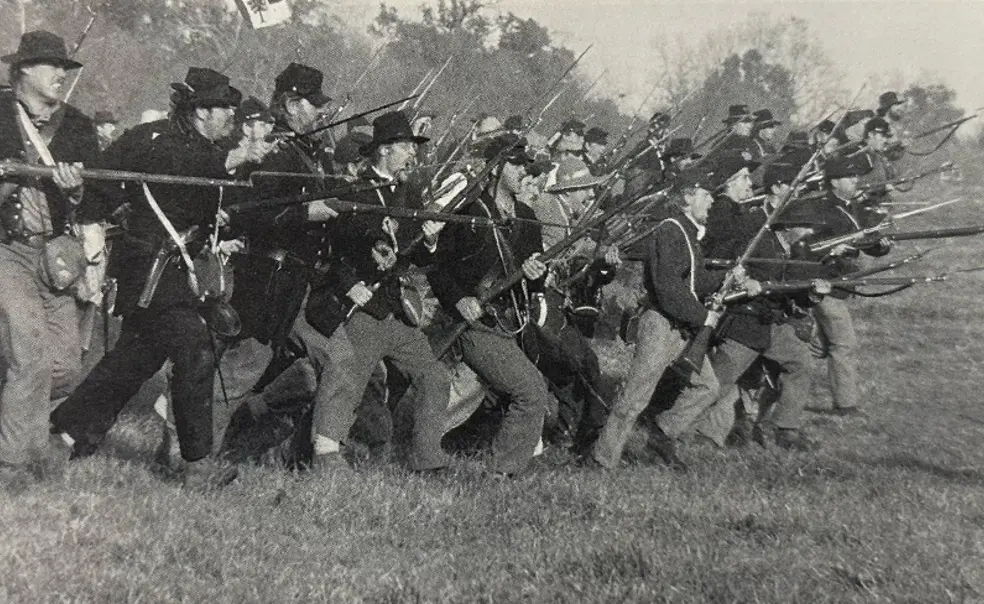

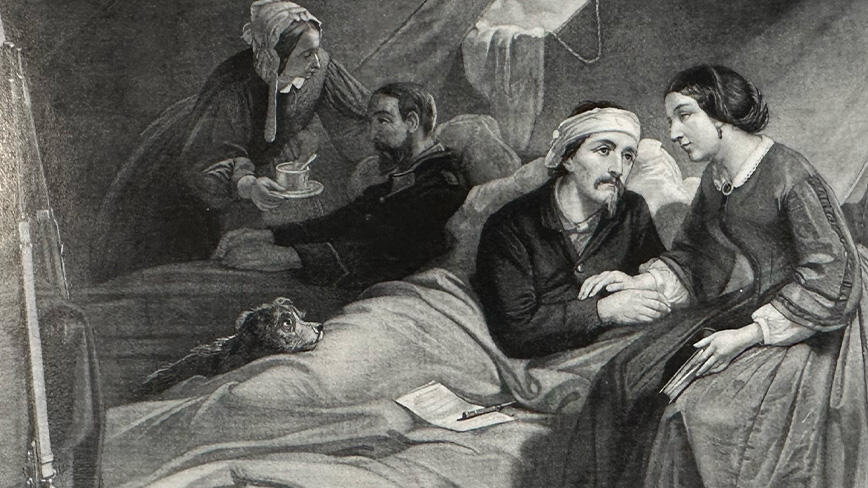
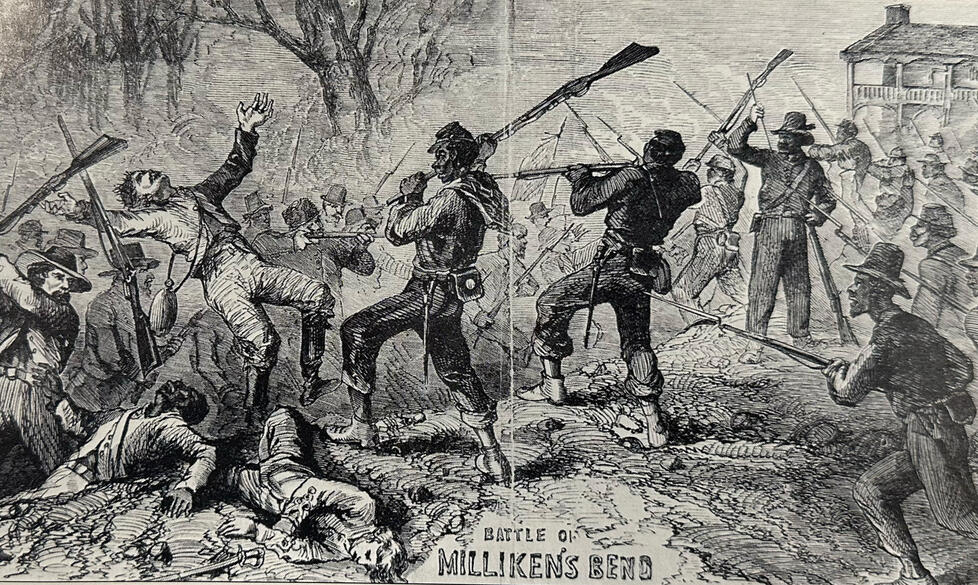
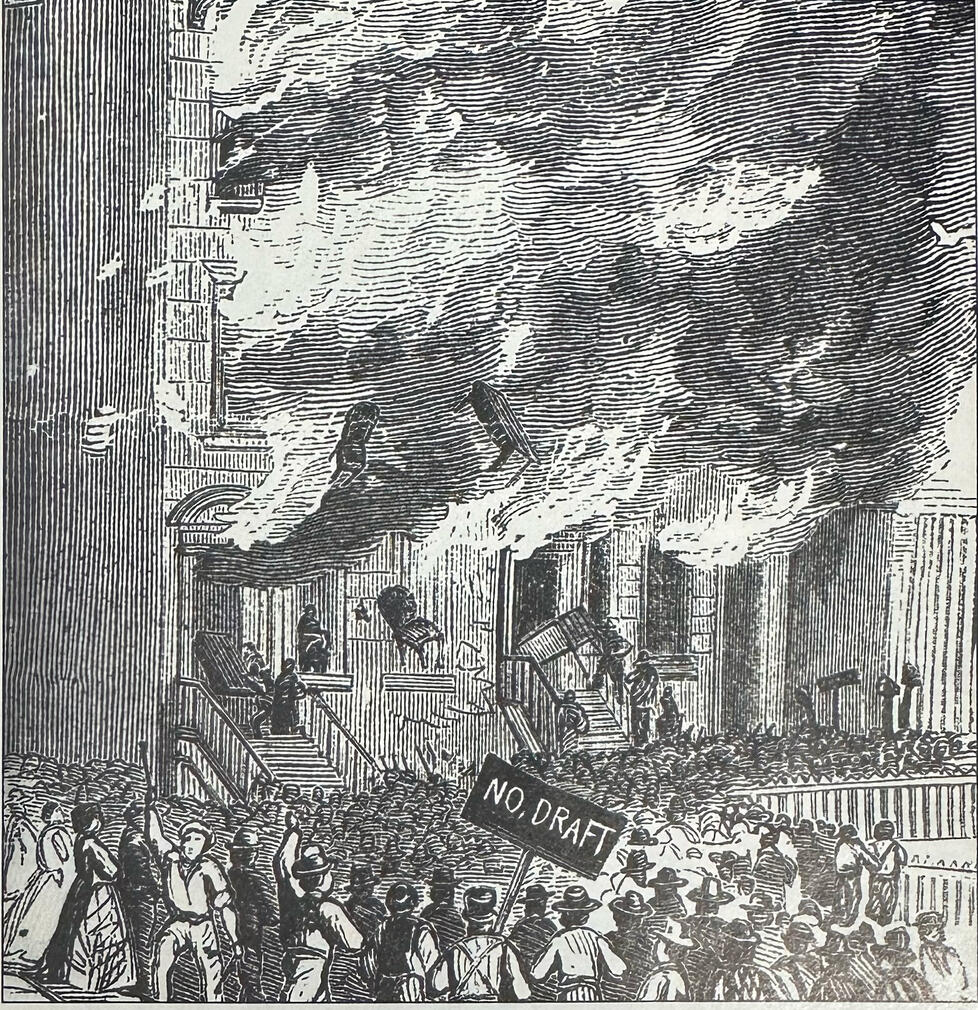









No responses yet